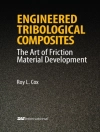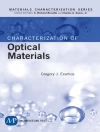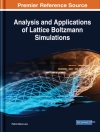This book presents the latest studies in the synthesis and application of boron nitride (BN) composites as multifunctional materials for advanced technologies. BN, the second hardest material after diamond, has different allotropic forms similar to carbon and can exist as nanosheets, nanotubes, nanoshells, and 3D permeable nanostructure. The different chapters in this book highlight the BN nanostructures and its composite materials synthesized with conducting polymer, epoxy, nylon, graphene, and natural fiber composite, to produce materials with enhanced properties such as excellent mechanical wear resistance, superior thermal conductivity, and unique electronic properties. This book caters to researchers and academics interested in BN-based composite and its potential applications in nanoscale electrical and thermal devices and metal-free electro- and photo-catalysts.
Tabella dei contenuti
1. Boron nitride aramid nanofiber composite.- 2. Vitrified cubic boron nitride composites: preparation and properties.- 3. Investigation on mechanical properties and wear performance of Nylon 6/Boron Nitride polymer.- 4. Composites Preparation and properties of Hexagonal boron and Poly(vinylidene Fluoride) – primarily based composites.- 5. Fe3O4 covered boron nitride nanoplatelets.
Circa l’autore
Dr. Mohammad Jawaid is currently working as High Flyer Fellow (Professor) at Biocomposite Technology Laboratory, Institute of Tropical Forestry and Forest Products (INTROP), Universiti Putra Malaysia, Serdang, Selangor, Malaysia, and also Visiting Professor at the Department of Chemical Engineering, College of Engineering, King Saud University, Riyadh, Saudi Arabia, since June 2013. Dr. Mohammad Jawaid received his Ph.D. from Universiti Sains Malaysia, Malaysia. He has more than 10 years of experience in teaching, research, and industries. His area of research interests includes hybrid reinforced/filled polymer composites and advanced materials. So far, he has published 37 books, 65 book chapters, more than 350 peer-reviewed international journal papers, and several published review papers under top 25 hot articles in science direct during 2013–2018. He also obtained 2 patents and 5 copyrights. H-index and citation in Scopus are 51 and 11838, and in Google scholar, H-indexand citation are 60 and 16232. He is founding Series Editor of Composite Science and Technology Book, and Springer Proceedings in Materials from Springer Nature. He is also International Advisory Board Member of Springer Series on Polymer and Composite Materials. His 5 published review papers under hot-cited articles in science direct during 2016–2019. He is Reviewer of several high-impact ISI journals (90 journals).
Dr. Anish Khan is an Associate Professor, at the Centre of Excellence for Advanced Materials Research (CEAMR), Faculty of Science, King Abdulaziz University, Jeddah, Saudi Arabia. He received his Ph.D. from Aligarh Muslim University, India, in 2010. He has research experience working in the field of synthetic polymers and organic–inorganic electrically conducting nano-composites. He completed a Postdoctoral in Electroanalytical Chemistry from the School of Chemical Sciences, Universiti Sains Malaysia (USM) in 2010–2011. He has research and teaching experience and published over 300 research papers in referred international journals. He attended more than 20 international conferences/workshops and has published 60 books, 6 in progress, and 107 book chapters. He has completed around 31 research projects. He served as an Editor and board member of the Journal of Natural Fibers (JNF) and a Member of the American Nano Society. Published two US patents. His fields of specialization are polymer nano-composite/cation-exchanger/chemical sensor/micro biosensor/nanotechnology, application of nano-materials in electroanalytical chemistry, material chemistry, ion-exchange chromatography, and electroanalytical chemistry, dealing with the synthesis, characterization (using different analytical techniques) and derivatization of inorganic ion-exchanger by the incorporation of electrically conducting polymers, preparation, and characterization of hybrid nano-composite materials and their applications, polymeric inorganic cation-exchange materials, electrically conducting polymeric, materials, composite material use as sensors, Green chemistry by remediation of pollution, heavy metal ion selective membrane electrode, and biosensor on the neurotransmitter.












